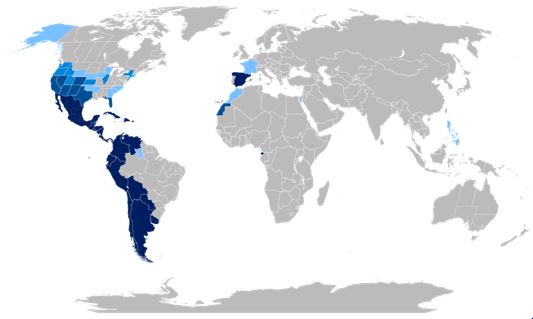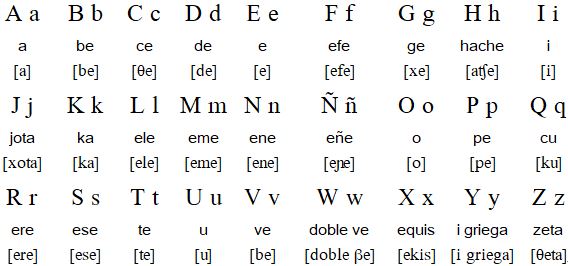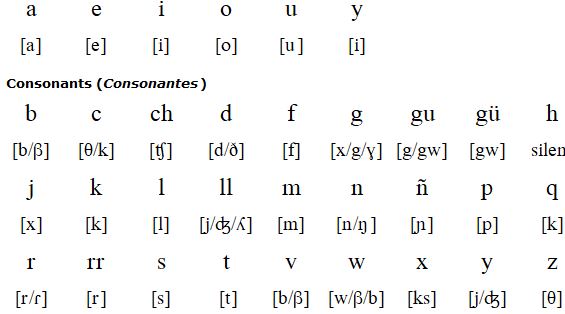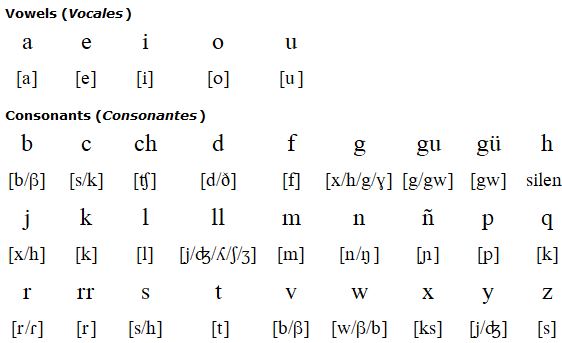Spanish translation

Whether you’re seeking simple English to Spanish translation services, or require someone with a specific expertise, we provide the best translation rates and flexible options to suit your needs. We offer linguistically fluent and technically accurate Spanish translation services for health care, legal, financial, technology, and manufacturing industries, as well as government sectors. Target Language Translation Services has one of the largest teams of professional Spanish linguists and subject matter experts who are trained to use the latest language tools and localization best practices to deliver high quality Spanish translations efficiently at scale. We’ll be sure to find a Spanish linguist who fits your needs. Our linguists work with many language pairs, including English to Spanish, French to Spanish, German to Spanish, and many more.

Spanish as official language.
Unofficial, but spoken by more than 25% of the population.
Unofficial, but spoken by 10–20% of the population.
Unofficial, but spoken by 5–9% of the population.
Spanish
Spanish is a Romance language with approximately 470 million speakers, 410 of whom speak it as a first language, while the remainder speak it as a second language. A significant number of people also speak Spanish as a foreign language. Spanish is spoken in Spain and 22 other countries including: Andorra, Argentina, Belize, Bolivia, Cayman Islands, Chile, Colombia, Costa Rica, Cuba, Dominican Republic, Ecuador, El Salvador, Equatorial Guinea, Guatemala, Honduras, Mexico, Nicaragua, Panama, Paraguay, Peru, Uruguay, the USA and Venezuela
Spanish first started to appear in writing in the form of notes and glosses in Latin religious texts, the Glosas Emilianenses, dating from the 11th century. During the 12th century, law codes (Fueros) were being translated into Spanish. Spanish prose flowered during the reign of King Alfonso X the Wise of Castile (1252-84), who in addition to being the king and a poet, also found time to write an encyclopaedia in Spanish called Las Partidas, which contains laws, chronicles, recipes, and rules for hunting, chess and card games. The first Spanish grammar, by Antonio de Nebrija, and the first dictionaries were published during the 15th and 16th centuries.
In Spain this language is generally called español (Spanish) when contrasting it with languages of other countries, such as French and English, but it is called castellano (Castilian, the language of the Castile region) when contrasting it with other languages spoken in Spain, such as Galician, Basque, and Catalan.
Some philologists use Castilian only when speaking of the language spoken in Castile during the Middle Ages, stating that it is preferable to use Spanish for its modern form. The subdialect of Spanish spoken in northern parts of modern day Castile is also called Castilian sometimes, and differs from those of other regions of Spain, however the Castilian dialect is conventionally considered in Spain to be the same as standard Spanish.
The name castellano is widely used for the language in Latin America. Some Spanish speakers consider castellano a generic term with no political or ideological links, much as "Spanish" in English.
Spanish alphabet (alfabeto español / el abecedario)

Ch (che) and Ll (elle) are also considered letters of the Spanish alphabet, however in 2010 the Royal Spanish Academy (RAE) decreed that these letters would no longer be treated as separate letters in dictionaries.
Pronunciation of European Spanish

Notes
b = [β] between vowels, [b] elsewhere
c = [θ] before i or e, [k] elsewhere
d = [ð] between vowels, [d] elsewhere
g = [x] or [χ] before i or e, [g] or [ɣ] elsewhere
gu = [g] before i or e, [gw] elsewhere
gü only appears before i or e
n = [ŋ] before g, x and k, [n] elsewhere. At the ends of words n = [ŋ] or [n]
r = [ɾ] between vowels and in consonant clusters such as br, pr and tr, [r] elsewhere
At the ends of words and syllables s often not pronounced, e.g. peces = /'peθes/ in northern Spain, /'peθeh/ in central Spain, /'peseh/ in southern Spain, and /'pesε/ in the southeast of Spain.
v = [β] between vowels, [b] elsewhere
w appears only in loanwords
Thanks to Francisco Peña Blas for corrections to this pronunciation guide, with additional information from Angel Castaño
Pronunciation of Spanish in Latin America

Notes
• Vowels are the same as European Spanish.
• c = [s] before i or e, but [k] elsewhere
• In some varieties of Caribbean and Chilean Spanish, ch = [ʃ], especially in Panamanian Spanish and in southern Chile. In northern Chile ch = [ts].
• g = [x] (or [h] in some countries, or [χ] in Peru) before i or e, [g] or [ɣ] elsewhere
• gu = [g] before i or e, but [gw] elsewhere
• ll = [j] or [dʐ] in most places, though the original pronunciation of [ʎ] is still used in some areas. ll = [ʃ] or [ʒ] in Argentina
• n = [ŋ] before g, e.g. tengo (I have), [n] elsewhere. In the Caribbean dialects, n can also be [ŋ] at the end of a syllable.
• r = [ɾ] between vowels, [r] elsewhere. At the end of syllables (not followed by a vowel) [l] in the Caribbean dialects; occasionally [ɹ] in Puerto Rico.
• rr = [χ] or [ʀ]in Puerto Rico.
• s = [h] at the ends of words and syllables in Argentina and Chile, e.g. peces = /'peseh/. Mainly in Cuba and northern Colombia it is not pronounced in that position, e.g. peces = /'pesε/
• x = [s] at the beginning of words, [ks] elsewhere. In words borrowed from Nahuatl, Mayan or other indigenous languages of Mexico, x = [ʃ] or [s]. X is sometimes replaced with J, especially in proper nouns, e.g. Ximena / Jimena.
• y = [i] at the end of syllables, such as hay, buey and muy, [j] as a consonant or semiconsonant. In parts of Argentina y = [ʒ̊] or [ʃ]. In Paraguay y = [dʒ].
• k and w appear mainly in loan words
Did You Know?
English has borrowed many words from Spanish. Below are just a few of them.
|
adios |
flamenco |
|
aficionado |
jalapeño |
|
bronco |
machete |
|
barrio |
patio |
|
canyon |
plaza |
|
corrida |
salsa |
|
El Niño |
siesta |
|
fiesta |
tango |
Just contact us to get more information and a no-obligation quote. Our project managers can be reached via telephone, email, or the form. We look forward to serving you.
For more information about Spanish Translation,
call us or add wechat today at +86-13616034782
or send us an email to:info@target-trans.com